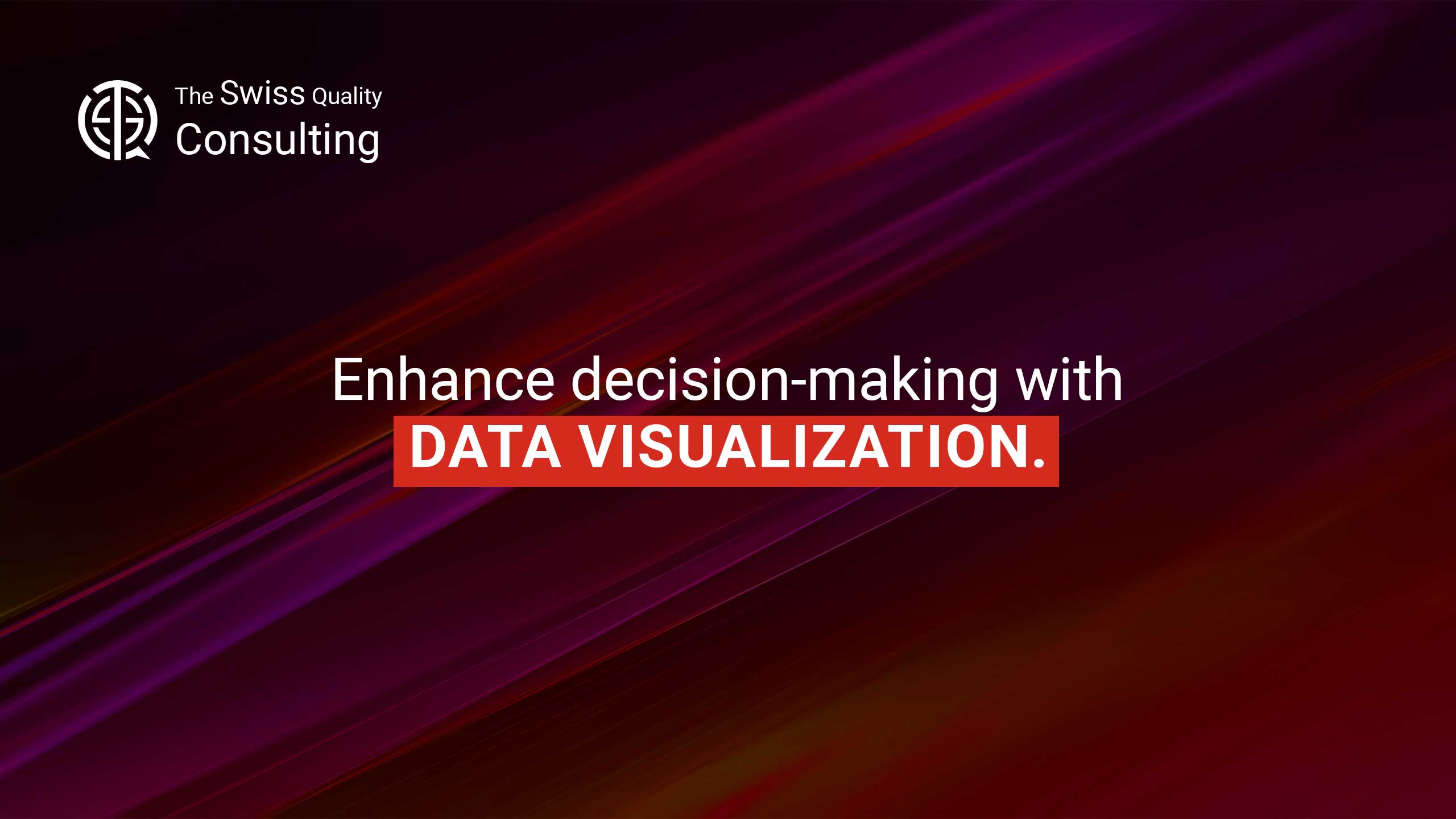Enhancing Decision-Making: The Power of Data Visualization

Unlocking Insights Through the Power of Data Visualization
In the dynamic landscape of business, informed decision-making is a cornerstone of success. Whether you're a business executive, mid-level manager, or entrepreneur, the ability to analyze and interpret data effectively can drive your organization forward. One potent tool in this endeavor is data visualization. In this article, we will explore the significance of data visualization and how it can empower you to enhance decision-making processes.
The Importance of Informed Decision-Making
In today's dynamic and ever-evolving business landscape, decisions must be made with remarkable speed and precision. Amidst the constant flux and relentless competition, businesses are under immense pressure to navigate complex challenges and seize emerging opportunities with a decisiveness that echoes the urgency of time itself. The consequences of poor decisions can be severe, reverberating through the very fabric of a company's operations, affecting its financial health, customer satisfaction, and overall trajectory towards success.
In this high-stakes arena, informed decision-making stands as an indispensable pillar of business resilience and growth. It is the cornerstone upon which strategic initiatives are built, market opportunities are grasped, and competitive advantages are forged. Informed decision-making empowers businesses to navigate the intricacies of the market with a clarity of thought that transcends impulse and intuition. It is the foundation upon which sustainable success is built.
The ability to make informed decisions is not merely a desirable quality; it is an imperative for businesses seeking to thrive in today's relentless environment. By harnessing data, insights, and industry trends, businesses can gain a holistic understanding of the market landscape, identify emerging opportunities, and mitigate potential risks. This informed approach ensures that decisions are not made in a vacuum but are rooted in a deep understanding of the business context.
Informed decision-making is not a passive process; it is an active engagement with the complexities of the business world. It requires a systematic approach that encompasses data gathering, analysis, and interpretation. Businesses must invest in robust data analytics capabilities, cultivate a culture of data-driven decision-making, and empower their teams to make informed choices at every level of the organization.
In today's competitive landscape, informed decision-making is not a luxury; it is a necessity. By embracing a data-driven approach, businesses can elevate their decision-making processes, optimize resource allocation, and navigate the ever-changing tides of the market with agility and precision. This informed approach is the key to unlocking sustainable growth, achieving market dominance, and securing enduring success.
Data Visualization: A Strategic Asset
Data visualization involves presenting data in a graphical or visual format, such as charts, graphs, and interactive dashboards. This approach offers several advantages when it comes to understanding complex information and making sense of vast datasets.
Clarity and Simplicity
Visual representations of data simplify complex information, making it easier to grasp and interpret. Instead of poring over spreadsheets or reports, decision-makers can quickly understand trends, patterns, and insights at a glance.
Identification of Trends
Data visualization tools can highlight trends and outliers within data, helping decision-makers identify opportunities or potential issues. Whether it's sales performance, market trends, or customer behavior, data visualization can provide valuable insights.
The Role of Technology in Data Visualization
Technology, particularly Generative Artificial Intelligence (AI), has revolutionized data visualization. AI-powered tools can automate data analysis and generate visual representations in real-time, enabling decision-makers to access up-to-the-minute insights.
Real-Time Insights
Generative AI can analyze large volumes of data in real-time, ensuring that decision-makers have access to the most current information. This is especially valuable in fast-changing industries where decisions must be made promptly.
Personalized Dashboards
Generative AI can also personalize data visualization dashboards based on user preferences and needs. Decision-makers can customize their dashboards to focus on the specific metrics and KPIs (Key Performance Indicators) that matter most to them.
Maximizing Decision-Making Through Data Visualization
Data visualization is not just a tool for data analysts; it's a strategic asset that should be leveraged across all levels of an organization. Here are some ways in which data visualization can enhance decision-making:
Streamlining Reporting
Automated data visualization tools can streamline the reporting process, saving time and resources. Decision-makers can access customized reports and insights without the need for manual data compilation.
Improving Collaboration
Visual representations of data make it easier for teams to collaborate and align their efforts. Decision-makers can share dashboards and reports with colleagues, fostering a shared understanding of goals and progress.
Conclusion
In conclusion, data visualization is a powerful tool for enhancing decision-making processes within organizations. It offers clarity, simplicity, and real-time insights that can drive business success. With the aid of Generative AI, data visualization becomes even more accessible and efficient. By prioritizing data visualization as a strategic asset, businesses can make more informed decisions, identify opportunities, and navigate challenges with confidence.
#DataVisualization #DecisionMaking #GenerativeAI #RealTimeInsights #Collaboration
https://bit.ly/48vcNkl
Comments
Post a Comment